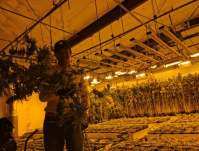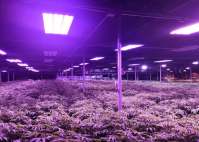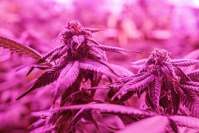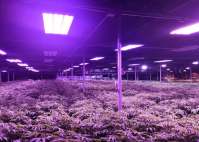In terms of growing indoor plants, yaorong LED grow lights are becoming more and more popular. This is mainly because they use less energy to produce more powerful light. yaorong LED grow lights can be expected to last longer than any other lights (such as fluorescent lights). You can also choose several different colors to mimic sunlight. The following are related factors about using yaorong LED grow lights to shorten the growth cycle of plants.
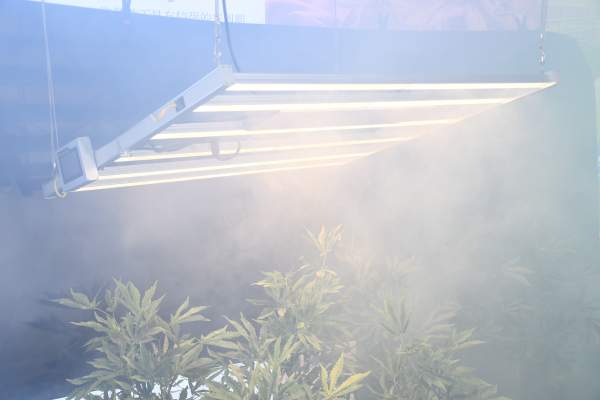
The effect of LED grow light quality on leaf growth. Leaf is the main organ for photosynthesis of plants. The change of LED grow light quality directly affects leaf growth. According to reports, the leaf area of birch seedlings grown under blue light is twice that of seedlings under red light, and the area of leaf epidermal cells, palisade tissue, sponge tissue and functional chloroplasts are larger than those under white and red light. The rice seedling experiment has the same result. Compared with white light, blue light can obviously promote the growth of rice seedling leaves, increase the angle between the leaf and the sheath, and make the leaves flat; while the effect of red light is opposite, it inhibits the increase of leaves. Wide growth. However, some people think that the compound light is more conducive to the growth and development of the leaves. The leaf area of lettuce under the combination of red, blue, and green light is extremely large, followed by white light, and red and blue light. Studies have also shown that increasing the proportion of LED red light in the compound light has a certain promotion effect on the increase of tobacco leaf area, but the leaf weight of the leaf is reduced, and the leaf becomes very thin.
The influence of the light quality of the LED grow light on the regulation of the stoma. The stoma is the channel for water and oxygen to enter and exit, and the gateway for plant photosynthesis. Stomatal movement is regulated by many external environmental factors and internal factors, of which light is an important regulating factor. It is found in both monocot and dicot plants that the blue light of LED grow lights can promote the opening of stomata. The principle that the blue light of LED grow lights promotes the opening of stomata, that is, the blue light activates the plasma membrane ATPase to continuously pump protons to form a transmembrane electrochemical gradient ,
The effect of the light quality of the LED grow light on the growth of crop stems. Different wavelengths of light can regulate the growth of the stems by affecting the level of endogenous hormones in the plant. Blue-violet light can increase the activity of indole acetic acid oxidase and reduce the level of auxin, thereby inhibiting the growth of plants. At the molecular structure level, red light can promote cell elongation, while blue light has the opposite effect. In general, the long-wavelength LED grow light red light promotes the elongation of the stem, while the short-wavelength light inhibits the elongation of the stem.
The effect of LED grow light quality on the growth of crop roots, light can pass through the internal light environment, through the regulation of photoreceptors, and regulate its growth and development. Although there is no direct light, the response to different light quality is also different. The blue light of LED grow lights is conducive to the growth and development of plant roots. Blue light can increase the root vigor, total absorption area and active absorption area of seedlings. The cultivated rice seedlings were irradiated with the blue light of the LED grow light, and it was found that the protein content accumulated in the root system of the rice seedlings was high, the non-protein nitrogen content was low, the ratio of protein nitrogen to total nitrogen was high, and the total nitrogen content was also high. The synthesis of nitrogen compounds in the root system of the seedlings, the production of protein accumulates in the root system. Seedling raising based on the blue light effect of LED grow lights on crop roots has been applied by reproducers.
The light intensity of LED grows also regulates the stomata that affect photosynthesis. With the increase of light intensity, the stomata opening and stomata pore area per unit leaf area increase gradually. The study found that the degree of stomata opening of the test tube seedlings of Dendrobium candidum increases with the light intensity. However, when the light intensity is 18 umol-n2s, the stomata of the leaves shrink and the stomata opening rate is 0: when the light intensity is 54 umol*m-2s-1, the stomata opening degree is extremely large, and the CO2 transportation resistance is also extremely small. In order to protect the photosynthetic structure of seedlings under high light intensity, reduce the stomata opening. The smaller the stomata opening, the more it can inhibit photosynthesis by increasing the diffusion resistance of CO2 uptake and reduce the burden on the photosynthetic organs.
Short-illuminated plants: refers to plants that bloom when the light period is less than a certain value according to the regular light period. Short-light time can meet the growth needs of such plants. If they are planted outdoors, LED grow lights are generally not needed.
Intermediate lighting plants: This type of plants does not require very strict lighting time, but the use of LED grow lights can appropriately shorten their growth cycle. Such plants can be matched with LED grow lights to supplement the light, which will increase the yield and market in advance.
Long-light plants: refers to plants that require a long light time. The light time must reach the light that meets the light cycle of the plant before the plants will bloom and set fruits. Otherwise, they will only grow normally and will not bring a better harvest. The light time is insufficient It will seriously affect the plants that need to be aligned and filled with LED grow lights.
To use LED grow lights to supplement light, you need to know the light time required by various plants, understand the light required for the photoperiod of plants, make adjustments to plant growth, and use LED grow lights to supplement light to increase crop yield and quality.
The above shows that the factors that affect the reduction of plant growth cycle are light quality, light intensity, and light time. However, these three factors can be controlled by LED grow lights, so LED plant lights are becoming more and more popular and widely used.


